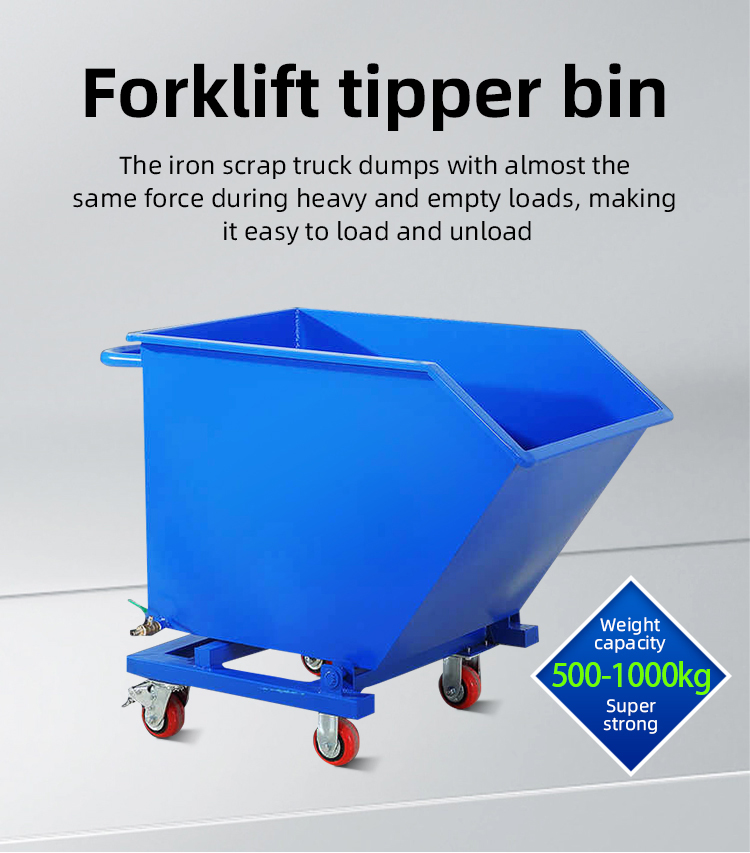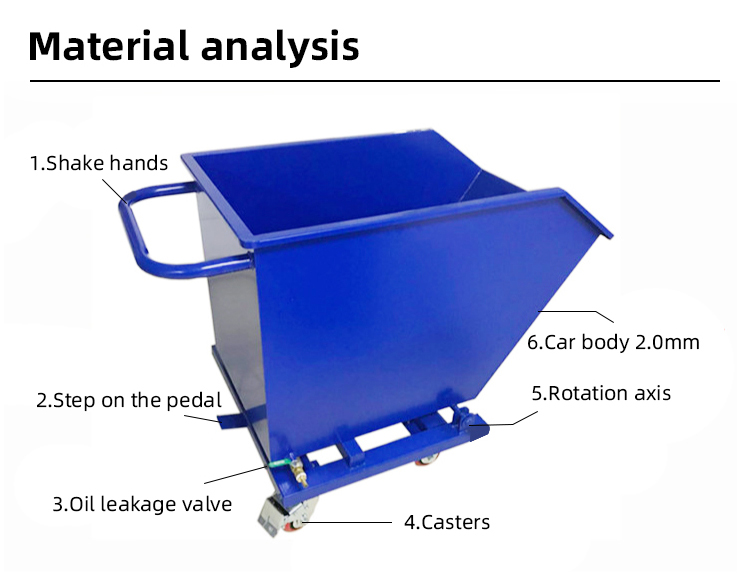
In today’s fast-paced industrial environment, efficiency in material handling is paramount. One of the key components that can significantly enhance operational productivity is the effective use of forklift bins. These versatile tools not only streamline the transportation of materials but also improve safety and organization within warehouses and distribution centers. This article serves as an essential guide to forklift bins, exploring their benefits, types, and best practices for maximizing their efficiency.
Understanding Forklift Bins
Forklift bins are specialized containers designed to be moved easily by forklifts. They come in various shapes and sizes, tailored to meet specific material handling needs. Their primary purpose is to facilitate the safe transport of goods, whether raw materials, components, or finished products, within a facility.

Benefits of Using Forklift Bins
Increased Efficiency
Forklift bins allow for quick loading and unloading, reducing the time spent moving materials. This efficiency translates into faster operations and improved workflow.
Enhanced Safety
Designed for stability, forklift bins minimize the risk of spills and accidents during transport. Properly designed bins keep materials secure and prevent injuries associated with manual handling.
Improved Organization
Utilizing forklift bins helps to keep materials organized within the warehouse. This organization not only speeds up retrieval times but also ensures that inventory is easily accessible.
Versatility
Forklift bins can be used for various applications, including bulk storage, waste management, and component transport. Their adaptability makes them a valuable asset in any material handling operation.
Cost-Effective
By minimizing damage to goods during transport and reducing the need for manual labor, forklift bins can lead to significant cost savings over time.

Types of Forklift Bins
Forklift bins come in various types, each designed for specific applications. Understanding these types can help you choose the right bin for your needs.
1. Standard Forklift Bins
These are basic rectangular bins that can be used for general-purpose material handling. They are typically made from durable materials to withstand heavy loads.
2. Self-Dumping Bins
Designed for waste disposal, these bins feature a tipping mechanism that allows for easy dumping of contents without manual intervention. This design is especially useful in waste management processes.
3. Stackable Bins
Stackable bins are designed to maximize vertical space in warehouses. They can be stacked when not in use, helping to save precious floor space.
4. Collapsible Bins
These bins can be collapsed when empty, reducing storage space requirements. They are ideal for operations that need flexible storage solutions.
5. Specialized Bins
Some bins are designed for specific materials, such as hazardous waste or fragile items. These bins often have additional safety features to accommodate their unique requirements.
Best Practices for Using Forklift Bins
To maximize the efficiency of forklift bins, consider implementing the following best practices:
1. Choose the Right Bin
Assess your material handling needs and select bins that are appropriately sized and designed for the materials you are transporting.
2. Regular Maintenance
Conduct regular inspections of forklift bins to ensure they are in good condition. Look for signs of wear and tear, and replace damaged bins promptly to maintain safety.
3. Train Operators
Ensure that forklift operators are trained in the proper use of bins. They should understand how to load and unload bins safely and efficiently.
4. Organize Storage Areas
Designate specific areas for different types of forklift bins to streamline operations. A well-organized storage area reduces the time spent searching for the right bin.
5. Implement Safety Protocols
Establish safety protocols for using forklift bins. This includes guidelines for weight limits, stacking practices, and proper handling techniques.
Conclusion
Forklift bins are essential tools in modern material handling operations. By increasing efficiency, enhancing safety, and improving organization, they play a critical role in optimizing warehouse and distribution center workflows. Understanding the different types of forklift bins and implementing best practices can significantly impact your operational success.
Investing in the right forklift bins and ensuring their effective use will not only enhance productivity but also contribute to a safer working environment. As businesses continue to seek ways to streamline operations, forklift bins remain a vital component of efficient material handling strategies.
Related News
- Enhancing Inventory Management with Stee... 2020-12-12
- Understanding Steel Pallets: Benefits an... 2020-12-12
- Safety First: The Role of Equipment Desi... 2020-12-12
- The Benefits of Using Hook Lift Systems ... 2020-12-12
- Custom Solutions: Tailoring Equipment to... 2020-12-12
- Transforming Waste Disposal with Tipper ... 2020-12-12
- The Future of Waste Recycling Containers 2020-12-12
- The Versatility of Roll-On/Roll-Off Dump... 2020-12-12
